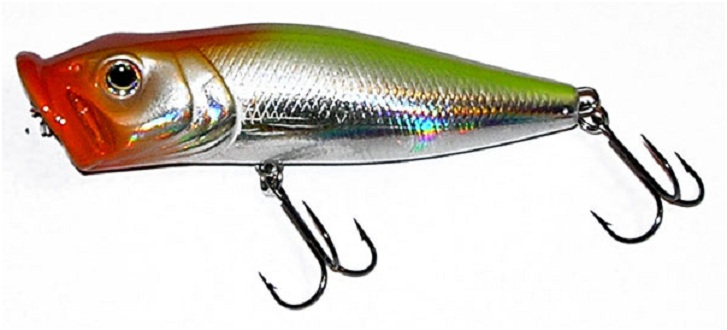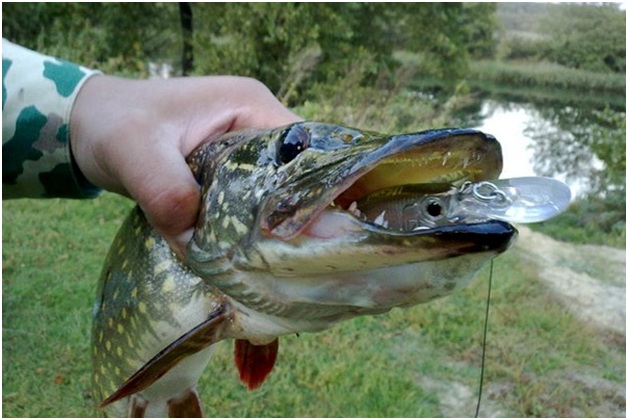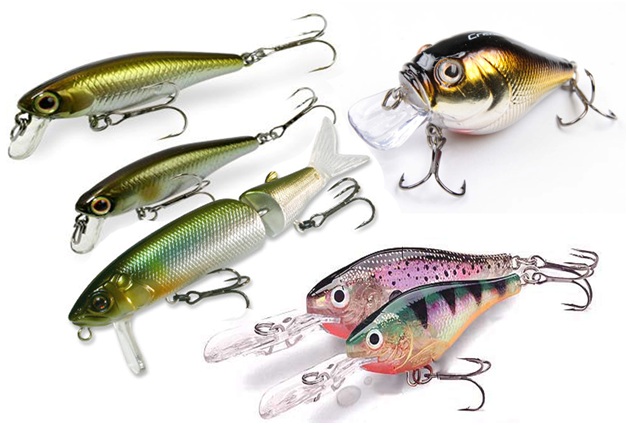Sections of the site
Editor's Choice:
- How to feed a hedgehog at home?
- How to make a poster with chocolates and inscriptions with your own hands?
- DIY hazel onions
- What you need for a picnic
- Pike head ear
- Rating of winter lures for perch
- How to salt pike caviar
- How to make cheese at home - recipe
- How to care for a hedgehog at home
- How to make a hunting bow with your own hands?
Advertising
| How to fish with a wobbler |
|
Wobblers are a special lure that has rapidly gained popularity among both spinning beginners and professionals. It looks like an imitation of a fish. Coming to the store, eyes run up from the variety of offered wobblers, but choosing the one that fits perfectly is not so easy. Let's understand the classification of this type of bait and the features of the choice. Wobblers classificationThe bait differs in several ways. The buyer will definitely pay attention to this. So, wobblers differ in the following external parameters:
However, these are only external indicators. It depends on them what kind of fish and at what depth will be caught. Depending on other characteristics, wobblers are distinguished: The bait itself outwardly consists of a fish-shaped body, one or more hooks, and a blade. The hooks for the wobbler are triple, and the body is made of plastic, wood and other materials. Beginners tend to pay attention to color, but this is a mistake. The color of the wobbler can be any and it will not affect the quality of fishing, but buoyancy is an important parameter. The bait is marked with Latin letters for the convenience of the buyer. How to choose a wobbler?Wobblers have characteristic names that are well known to avid fishermen. When choosing, you must initially proceed from where, how, when and what will be caught. You need to rely on four parameters, three of which are of serious importance: shape, buoyancy and deepening. The formThe shape of the bait is of great importance when fishing. Firstly, this parameter directly affects the behavior of the fish in the water, and secondly, it attracts a larger predator. The bait is divided into the following types in shape:
Lobe, in turn, are subdivided according to their shape:
The bait without a blade is divided into the following types:
There are also composite modules that are designed to make a variety of baits. You can also try cicada-type wobblers. They imitate various insects, frogs, and others. Buoyancy
If it is quite simple to determine the type of wobbler by the shape, then the buoyancy parameter is indicated by a marking. Latin letters will help in identifying the bait. Each type of buoyancy is subdivided into two or three subtypes. Floating wobblers can be as follows:
All lures of this type float on the surface. The sinking type is also divided into three subtypes:
Such a bait is heavy and rather large. When it falls into the water, it sinks to the bottom. Suspenders are of the following subspecies:
They submerge in water and remain in it, without sinking to the bottom. A small weight will turn the suspender into a sinking type. Having dealt with the buoyancy parameter, it is imperative to familiarize yourself with another type of classification - deepening. Deepening
The wobbler is considered to be a special lure mainly because it can go to different depths. Three penetration classes:
Outwardly, it is possible to determine how deeply a given model dives by the size of the scapula. If it is small, the wobbler is absolutely superficial. In addition to the letters on the packaging, two numbers are available to the buyer. They are written with a dash. The first is the depth for casting and the second for trolling. It is they who need to be guided when choosing. It should be understood that the wobbler does not always plunge to the required depth immediately. This takes time. It depends on the weather, current and other conditions. It is for this reason that the correct choice of a wobbler is determined with the experience of a very specific fisherman. The choice of bait always depends on the fishing conditions. ColourThis is an insignificant parameter, it is most often commercial in nature. The color is chosen either to your own taste, or based on the time of year, time of day, weather conditions and the purity of the reservoir. It is important for the predator to notice the bait. Wobblers mounting methods
This editing can be done using any knot, professionals often use the Jam Knot knot. This method has one serious drawback - a quick change of the bait is impossible. It is for this reason that fishermen use all kinds of mounts, the features of which are described below.
How to fish with a wobblerFishing with this type of bait is quite common today. With an abundance of types of wobblers in the store, you just need to purchase the desired model and go to the river or lake. Boat fishing tacticsWhen fishing from a boat with a spinning rod, pay attention to the length of the rod. It should be short and reach in length no more than 215 centimeters. Do not use a two-handed rod when fishing from a boat due to extreme inconvenience. The choice of a wobbler in this case is not limited by anything. These can be both deep sea and surface models. Shore fishing tacticsFor fishing on the shore, a longer rod is chosen. The exception is small rivers and overgrown ponds, where it is best suited short rod no more than 2 meters in length... Deep sea lures are completely ineffective in this case. It is worth paying close attention to surface models. The reel must match the line and bait. Fishing tactics at nightThey fish at night mainly from July to the end of September. The best nibble is when the moon is full. Shore fishing is not encouraged, but there are exceptions. Minou is most often used as a bait, which shines in the dark and moves actively. Silver models are available. Lures of wobblers are widespread. You shouldn't experiment at all at once. It is important for a fisherman to have a standard set and start experimenting with it. Fishing is simple enough. The imitation of the fish itself attracts the predator with its shape, play and sounds. Pike is an active fish, it goes well with all types of lures. Deep-sea wobblers such as fat, minou and shad are suitable for fishing. Cranks have proven themselves well. Thus, fishing with a wobbler is one of the easiest ways to catch a predator. Those who have decided to hunt for pike or will like this type of bait. |
| Read: |
|---|
New
- How much does it cost and where can I buy a ticket?
- Secrets of forecasting in Gosloto: the choice of numbers
- Secrets of forecasting in Gosloto: the choice of numbers
- Where can you collect your prize if you win?
- National lottery lotto maxima results
- Secrets of luck or a step-by-step algorithm for winning the lottery 6 out of 49 rules of the game
- Secrets of luck or a step-by-step algorithm for winning the lottery
- "Someone must be lucky"
- How to feed a hedgehog at home?
- How to make a poster with chocolates and inscriptions with your own hands?

 The behavior of the lure in the water after casting classifies the buoyancy parameter. This parameter is very important, but not all anglers are aware of this. All wobblers are divided according to this type into three main classes:
The behavior of the lure in the water after casting classifies the buoyancy parameter. This parameter is very important, but not all anglers are aware of this. All wobblers are divided according to this type into three main classes: This parameter is also important, it has a letter designation on the package with the bait, but most often this designation is very arbitrary. Numerical data is of more importance in the designation of this parameter. Let's figure out the details.
This parameter is also important, it has a letter designation on the package with the bait, but most often this designation is very arbitrary. Numerical data is of more importance in the designation of this parameter. Let's figure out the details. There are several methods of attaching a wobbler at once. Each of them has its own characteristics. The most important thing to know before you start fishing is there should be as few unnecessary elements as possible around the bait and on it. In this regard, one of the favorite methods is to attach it directly to the line.
There are several methods of attaching a wobbler at once. Each of them has its own characteristics. The most important thing to know before you start fishing is there should be as few unnecessary elements as possible around the bait and on it. In this regard, one of the favorite methods is to attach it directly to the line.




